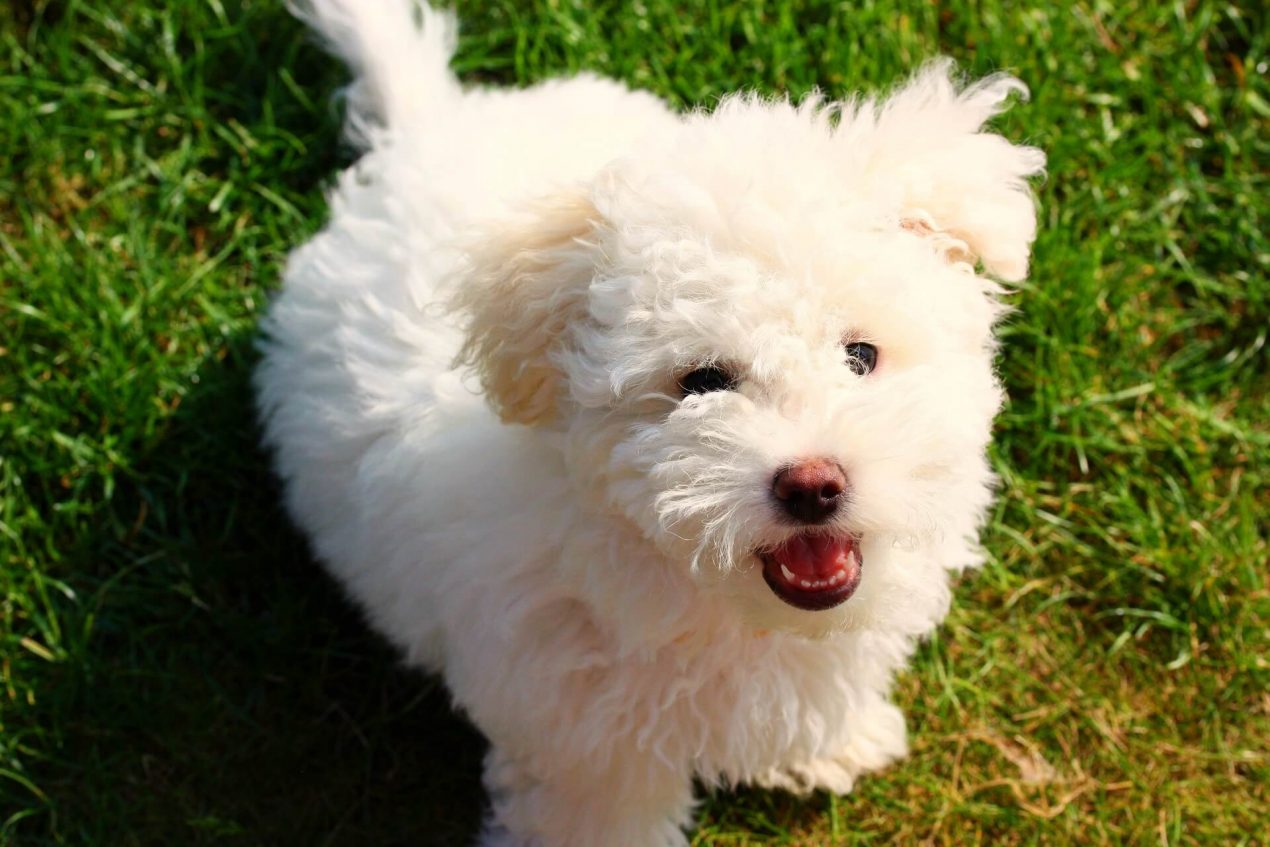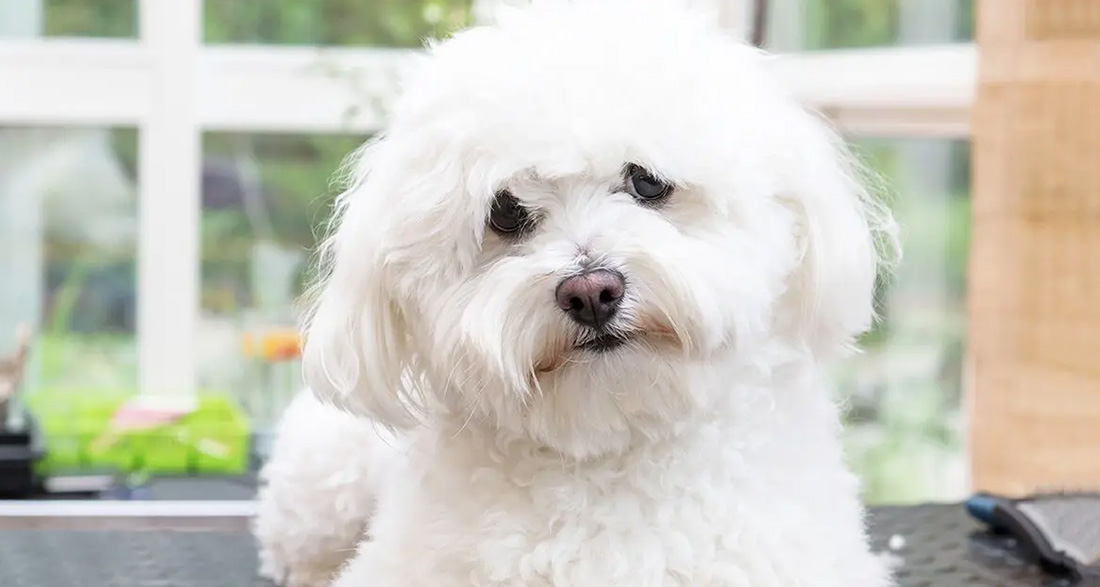The Bolognese is a small Italian breed of dog named after the city of Bologna, where it was predominantly found. This cheerful dwarf captivates people of all ages, whether in families or with singles. Learn more about the Bolognese breed in the following portrait.
History of the Bolognese
The Bolognese traces its ancestry back to ancient times, before the birth of Christ, as mentioned by the Greek philosopher Aristotle (384 – 322 BC). Aristotle referred to these small dogs as “canes melitensis,” which translates to “Maltese dogs.” Hence, there is a close relationship with the very similar-looking Maltese breed. The four-legged companion likely arrived in Italy with Balearic sailors and spread during the 15th and 16th centuries, first in Italy and France, before becoming established in other countries.
Throughout history, nobles, kings, and emperors have enjoyed the company of Bolognese dogs. In ancient Rome, lapdogs were luxury gifts for nobles. Famous owners of Bolognese dogs throughout history include French King Henry III and King Philip II of Spain in the 16th century, Empress of Russia Catherine the Great, and Austrian Empress Maria Theresa in the 18th century. The name “Bichon” was coined in the 16th century, derived from the French word “bichonner,” meaning “to pamper.” This reflects the lavish treatment the wealthy bestowed upon the small four-legged companions during that time.
Since 1956, the Bolognese has been a recognized Italian breed by the FCI. It is classified under Standard number 196, FCI Group 9 “Companion and Toy Dogs,” Section 1 “Bichons and Related Breeds,” 1.1 “Bichons.”
Breed Overview
GROUP: Toy
HEIGHT: 10 to 12 inches
WEIGHT: 6 to 10 pounds
COAT: Long, cotton-like curly coat
COAT COLOR: White
LIFE SPAN: 12 to 14 years
TEMPERAMENT: Playful, even-tempered, loyal, docile, serious
HYPOALLERGENIC: Yes
ORIGIN: Italy
Appearance of the Bolognese
The fluffy, small fellow is often likened to a cotton ball or snowball. An adult Bolognese measures just 25 to 30 centimeters and weighs a maximum of 4 kg. Its long, fluffy coat, described as “forming flakes,” is always pure white without spots or markings. It covers the entire, slightly square body, supported by short legs. Long hanging ears and a high-set tail that arches over its back adorn it. The Bolognese has a black nose and round, deep black button eyes with black eyelids. With its heart-melting gaze, the little Italian is quite adept at dissuading its owner from consistent training.
Nature and Character
The Bolognese’s character is characterized by calmness and loyalty. It is very undemanding and does not require excessive activity or too much exercise. The fluffy, loyal dwarf is simply happy to accompany its owners as often as possible. “Free roaming” during walks is not a problem because the Bolognese is not driven by hunting instincts.
It enjoys being stroked and likes to play, making it well-suited for families with children. The balanced Bolognese also gets along well with other dogs and pets, so its home can accommodate multiple animals. As the little furball is quite intelligent and trainable, it is easy to teach it a trick or two. It also serves as a mini watchdog. It reliably alerts with a “deep voice” (perhaps to compensate for its small size) to anything suspicious. However, it is not prone to barking. It is reserved towards strangers and may bark at them, but it is never aggressive.
| Affection Level | High |
| Friendliness | High |
| Kid-Friendly | High |
| Pet-Friendly | High |
| Exercise Needs | Low |
| Playfulness | High |
| Energy Level | Low |
| Trainability | Medium |
| Intelligence | Medium |
| Tendency to Bark | High |
| Amount of Shedding | Low |
Acquiring a Bolognese
Is the Bolognese the right companion for me?
The content little companion suits both dog beginners and professionals. It is also the ideal dog for animal lovers who may not have as much time available, as well as for seniors who may not be as mobile. This lapdog is content with short walks and is happy in families with children, with singles, with the elderly, and with the young.

Price of a Bolognese:
If you want to buy a purebred Bolognese, you’ll pay approximately between $1200 and $1600 for a puppy. Additionally, there are costs for items such as its food, dog equipment, and vaccination expenses.
What should I consider when buying?
You should only buy a puppy from a reputable Bolognese breeder who is registered with a breeding association. A good breeder can provide pedigree papers and a vaccination record with all the usual vaccinations. Their little furballs should have been dewormed multiple times and microchipped. It’s also important that only healthy parent animals, especially those free from patellar luxation, were used for breeding. A good breeder will also ensure that their Bolognese puppies go to good homes and will therefore ask you many questions. You should definitely be allowed to visit the puppies before making a purchase to see if they have been raised in a good environment.
You should definitely steer clear of puppies offered at too low a price, which may also be offered without papers. These supposed breeders are only interested in maximizing profit at the expense of the animals’ health.
Development and training of the puppy
While the sweet Bolognese, especially as a puppy, may look innocent, consistent training is crucial. The intelligent little one can quickly learn rules and commands if you train it with love, patience, and consistency. Like all dogs, it will test how consistent its owner can be.
To ensure the little rascal socializes well, it should definitely attend obedience classes. Given the Bolognese’s sociable nature, it will likely enjoy this. Furthermore, it should be accustomed from a young age to grooming activities such as brushing, occasional bathing, and teeth brushing. It should also practice riding in cars and living with other pets from an early age.
How do I care for a Bolognese?
You can certainly keep a Bolognese in a small apartment in the city. It is very small and, moreover, undemanding.
Activities with the Bolognese:
The four-legged friend doesn’t have a pronounced urge to move. The “handy” Bolognese simply enjoys accompanying its owner everywhere. It loves short as well as long walks – but only when the Bolognese is fully grown. Since it has very short legs and needs to take many small steps, you should not overdo it at the beginning and pay attention to when it gets tired. If its owner enjoys cycling, the Bolognese will happily ride along in a bicycle basket. Furthermore, the white dwarf can easily travel on vacation. Due to its small size, it fits easily into a small travel bag and can even be taken into the cabin on an airplane.
It also enjoys dog sports, which are even available specifically for mini dogs. For example, you can try agility or dog dancing with your furry friend. The obedient Bolognese will surely have a lot of fun practicing tricks to music during dog dancing. At home, it enjoys cuddling and playing, adapts easily, and also likes to take a nap.
Health and Care
Bologneses are generally considered robust dogs, living to be approximately 12 to 15 years old. However, like all breeds, they are prone to breed-specific health issues. Small dogs, for example, are prone to patellar luxation, where the kneecap dislocates. They also tend to have eye issues and occasional dental problems. Since the Bolognese has droopy ears, ear infections can occur. Therefore, it’s advisable to preventively check the ears for parasites and buildup. Regular inspection and cleaning can help prevent painful ear infections.
The Bolognese’s coat has minimal insulating undercoat, so it can easily feel cold in winter. A protective dog coat can be very helpful in this regard. Shedding is minimal in this breed, making it suitable for allergy sufferers. However, you’ll need to engage in intensive coat care for the long-haired Bolognese to prevent matting. Brushing the little furball should be done at least every two days, and daily during shedding season.
After each walk, you should also use a brush to remove dirt, leaves, and small branches from the coat, as these can easily get tangled in the long hair. To keep the Bolognese’s coat white, it should have a dog bath with a mild dog shampoo approximately every six weeks. Especially the hair around the Bolognese’s eyes needs to be washed and possibly trimmed carefully. If hair gets into the eyes of the tiny dog, they can easily become inflamed.
Care also means ensuring good, healthy nutrition for the dog. There is special dog food for small breeds. You should always follow the recommended feeding amount, but also adjust it according to your dog’s activity level and age. Furthermore, you should weigh the dog from time to time to prevent it from becoming overweight. Because a little extra weight can easily be a bit too much for such a small dog.
Interesting and Worth Knowing
Close relatives of the Bolognese include the Bichon Frise, the Havanese, and the Maltese. They are all classified as Bichons. Furthermore, the Coton de Tulear and the Lowchen are related to it.
Do you have a Bolognese or are you considering getting one? Tell me in the comments what makes it special in your opinion!


